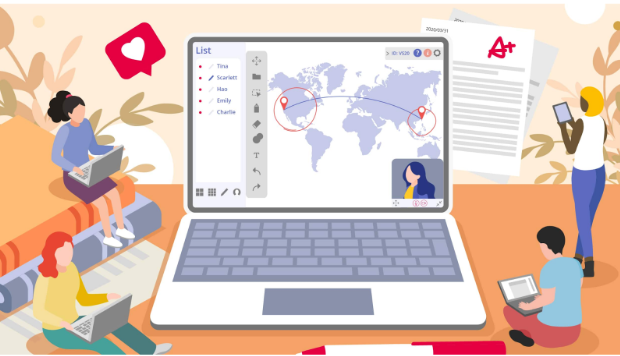Ever since the COVID-19 pandemic in 2020, virtual learning has transformed educ ation and provided a more accessible school environment. During the pandemic, students engaged in online learning on many different platforms, like Zoom and Google Meet. However, many people are starting to see the true advantages of virtual education and its benefits for students, teachers, and other jobs.
One of the most significant benefits of virtual learning is the flexibility. During in-person school, students have a set schedule with specific class times and due dates. On the other hand, with virtual learning, students can create their own schedules and manage time with strategies that best fit them. This can create a more open schedule to make time for students balancing work, family, or extracurriculars. This often allows students to feel more on top of school work and manage their responsibilities at their own pace. Olivia Weaver (11), a hybrid student, says “I really enjoy doing online because it helps me balance my work hours and the time I dedicate to my school work, while also helping me learn to be independent”.
Although virtual learning prevents children from communicating face-to-face with other students, with remote learning, physical distance between educators and students is not a problem. This can provide students with a wider variety of education and ways to connect with other students who may not be close to them. Using technology, teachers can use many types of resources to engage students. For example, teachers can use videos, interactive online games, and even pre-existing lessons uploaded by other educators, to make lessons more dynamic and appealing to the students. This way of teaching can help engage students with a variety of learning styles. Teachers can also implement group projects to help them get a variety of perspectives and collaborate with other students worldwide.
Another benefit of virtual learning is its cost-effectiveness. In-person education often involves expenses such as gas or bus costs, tuition, materials, etc. However, with virtual learning, students only need a device to connect with their online classes and any other needed supplies required by the teachers. This creates a more accessible and cheaper way for students to get the education they need while still being able to learn effectively.
Some students may not have access to advanced technology and the opportunity to engage in remote learning, but as time goes on, we can see the world becoming more and more digital. This allows students to engage with technology more and will help them gain technological skills that can offer many benefits for students and teachers.




























